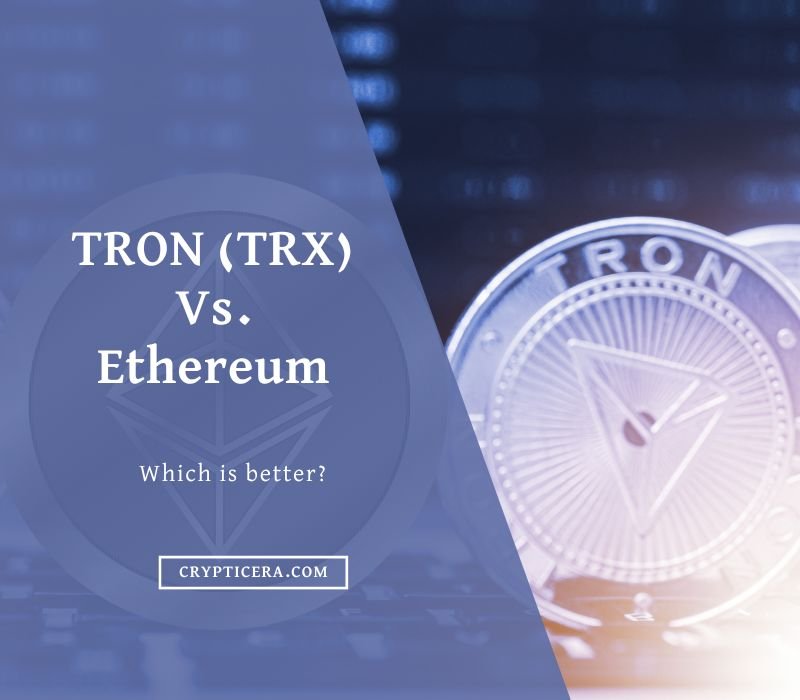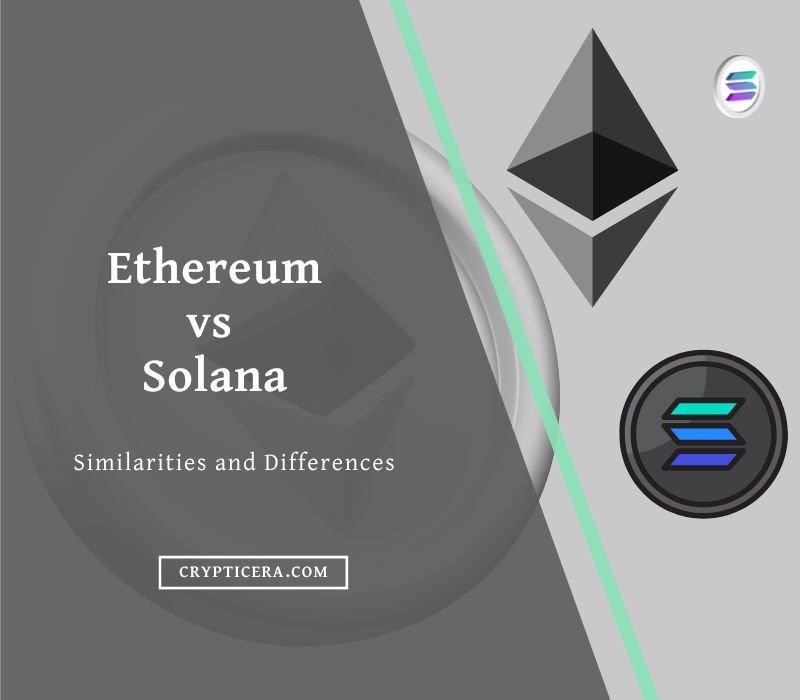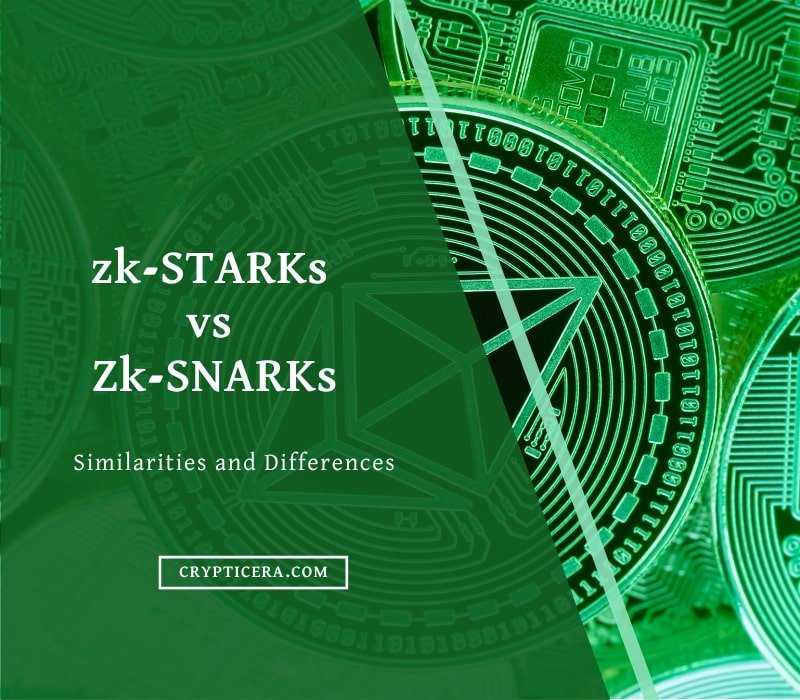Filecoin and Arweave are two decentralized storage networks that have gained significant attention in recent years.
Both networks aim to provide secure, decentralized, and permanent storage solutions, but they have different technical architectures, consensus mechanisms, and ecosystem development.
In this blog post, we will compare Filecoin and Arweave in detail, and explore their key differences and similarities.
Filecoin (FIL) vs Arweave (AR): At a Glance
| Feature | Filecoin (FIL) | Arweave (AR) |
|---|---|---|
| Market Cap | $1.7 billion | $320 million |
| Consensus mechanism | Proof-of-replication and proof-of-spacetime | Proof-of-access |
| Storage fees | variable | one time |
| Data storage technology | InterPlanetary File System (IPFS) | Blockweave and Permaweb |
| Storage model | Multiple storage tiers and pricing structures | Flat fee for storing data on the network |
| Ecosystem development | Established and mature | Newer and smaller |
| Security | Data is encrypted and distributed across multiple storage providers | Data is encrypted and stored permanently on the network |
| Network performance | High availability and fast retrieval speeds | High availability and fast retrieval speeds |
| Use cases | Decentralized file storage and sharing, hosting of websites and other digital assets | Permanent storage of documents, websites, and other digital assets |
What is Filecoin (FIL)?

Filecoin is a decentralized storage network that uses a cryptocurrency of the same name (FIL) to incentivize people to share their unused storage space.
It is built on top of the Interplanetary File System (IPFS), which is a peer-to-peer protocol for storing and sharing files.
Filecoin allows users to rent storage space from others in the network, and also allows others to rent out their own unused storage space.
The Filecoin cryptocurrency is used to pay for the storage and retrieval of data on the network.
The project was founded by Protocol Labs and the Filecoin mainnet was launched in October 2020.
key features of filecoin (FIL)
Here are some key features of Filecoin (FIL):
- Decentralization: Filecoin utilizes a network of independent storage providers to distribute data across the network
- Incentivization: FIL is used to reward storage providers for contributing storage space and bandwidth to the network
- Interplanetary File System (IPFS): Filecoin utilizes the IPFS protocol to address and locate files on the network
- Proof of Replication: Filecoin uses a mechanism called Proof of Replication to ensure that data is being stored as promised.
Pros and Cons of Using Filecoin (FIL)
| Pros | Cons |
|---|---|
| Decentralized storage | Scalability challenges |
| IPFS for efficient and secure storage | Complex technology may be difficult for non-technical users to understand |
| Advanced cryptography to secure the network | User adoption and participation are essential for network success |
| Open source | |
| High data availability | |
| Low cost compared to traditional storage providers |
Understanding IPFS in detail
The InterPlanetary File System (IPFS) is a decentralized protocol for storing and sharing files. It is used by Filecoin as the underlying storage layer for the network.
In other words, when a user stores a file on the Filecoin network, that file is actually being stored and distributed across a network of nodes using the IPFS.
It uses a content-addressable system, which means that each file is assigned a unique identifier based on its content, rather than its location.
This allows for efficient retrieval of files, as users can retrieve a file by providing its identifier, rather than needing to know the specific location where the file is stored.
IPFS also uses a distributed hash table (DHT) to store and retrieve files.
In a DHT, files are stored on multiple nodes, and the network uses a distributed algorithm to determine which nodes are responsible for storing and serving each file.
This allows for high data availability, as even if some nodes go offline or experience technical issues, the file can still be retrieved from other nodes on the network.
What is Arweave (AR)?

Arweave is a decentralized data storage network.
It allows users to store data in a permanent and censorship-resistant way, using a new type of data storage technology called “blockweave”.
The network is powered by a native cryptocurrency called AR, which is used to incentivize network participants to provide storage space for the network.
Arweave aims to provide a more durable and resilient alternative to traditional cloud storage services.
Key Features of Arweave (AR)
- Permanency: Data stored on the Arweave network is permanent and cannot be altered or deleted.
- Blockchain: Arweave uses a blockchain-based protocol to secure and validate transactions.
- File storage: The network allows for the storage of various types of files, including text and media.
- Token: The native cryptocurrency of the network is called AR, which is used for transactions and as a reward for network participants.
- Fast: The network can handle high transaction throughput
- Low cost: Transactions are inexpensive and don’t require gas.
Pros and Cons of Arweave (AR)
| Pros | Cons |
|---|---|
| Permanent and censorship-resistant storage | New and untested technology |
| High availability | Limited adoption and usage compared to other storage solutions |
| Low cost | Dependent on the success and growth of the Arweave network |
| Community-driven | Potential scalability issues as the network grow |
| Data integrity | Subject to cybersecurity threats like any other digital platform |
| Durability | |
| Open Source |
Understanding Blockweave and Permaweb in detail
Blockweave is a type of data storage technology used by the Arweave network. It is a decentralized, permanent, and censorship-resistant way of storing data.
In a blockweave, data is organized into blocks that are linked together in a chain, similar to how blocks are organized in a blockchain.
However, unlike a blockchain, which typically has a linear structure, a blockweave can have a more complex and flexible structure, allowing for more efficient storage and retrieval of data.
Permaweb is the name given to the collection of data stored on the Arweave network.
It refers to the idea that data on the network is permanent and cannot be deleted or altered once it is stored.
The permaweb is accessible to anyone with the necessary tools and knowledge and can be used to store a wide variety of data, including documents, websites, and other digital assets.
Filecoin vs Arweave: How to Store Data?
Steps to Store Data with Arweave (AR)
Here are the steps to store data in the Arweave network:
- Download and install a wallet for the Arweave network. This will allow you to manage your AR tokens and interact with the network.
- Obtain some AR tokens. You will need to have some AR in your wallet in order to store data on the network. You can obtain AR tokens through a cryptocurrency exchange or from other users.
- Choose a data storage provider. The Arweave network is decentralized, so you will need to select a provider that you trust to store your data.
- Upload your data to the provider. You can use the wallet software to upload your data to the provider’s storage space on the network.
- Pay the storage fee. The provider will charge a fee for storing your data on the network, which you will need to pay using your AR tokens.
- Monitor your data. You can use your wallet software to monitor the status of your data on the network, and make sure that it is being stored properly.
Note: The exact steps may vary depending on the specific wallet and provider you use. It is important to carefully research and compare different options before deciding on a wallet and provider.
Steps to Store data with Filecoin (FIL) using ChainSafe Files
Chainsafe Files is a JavaScript library that provides a convenient interface for interacting with Filecoin and IPFS. To store data in Filecoin using Chainsafe Files, you’ll need to do the following:
- Install the Chainsafe Files library by running
npm install chainsafe-filesit in your terminal. - Import the Chainsafe Files library into your project by adding the following line of code at the top of your JavaScript file:
const ChainsafeFiles = require('chainsafe-files'); - Initialize a new instance of the Chainsafe Files library by calling the
ChainsafeFilesconstructor and passing in the necessary configuration options, such as the Filecoin node URL and your wallet address. For example:
const chainsafeFiles = new ChainsafeFiles({
node: 'https://filecoin.example.com/',
wallet: 't3c6k4n6y4j6z2w6h4x6u4m6d4g6c4p6o4q6l4e6f4b6v4i6j6a6'
});- Use the
storemethod of thechainsafeFilesobject to store your data in Filecoin. This method takes two arguments: the data you want to store (as a Buffer or a Uint8Array), and the optional options object that allows you to specify the amount of Filecoin you want to spend on storage and the duration of the storage period. For example:
const data = fs.readFileSync('/path/to/file.txt');
const options = {
price: 1,
duration: 1000
};
chainsafeFiles.store(data, options)
.then((cid) => {
// The data has been successfully stored in Filecoin with the
// specified options and the resulting CID is returned
console.log(cid);
})
.catch((err) => {
// An error occurred while storing the data
console.error(err);
});This is just a brief overview of how to store data in Filecoin using Chainsafe Files. For more detailed information, please refer to the Chainsafe Files documentation.
For a more detailed Explanation: Read the Full Guide on Filecoin storage system
IPFS vs Blockweave: Comparing Storage Models
In IPFS, data is divided into blocks and distributed across the network, and users can access the data by requesting it from other nodes.
In blockweave, data is also divided into blocks, but it is stored in a more structured and organized way, and users can access it by proving that they have the necessary permissions.
| Feature | IPFS | Blockweave |
|---|---|---|
| Type of Protocol | Peer-to-peer file sharing | Data storage and sharing platform |
| Blockchain | No | Yes |
| Data storage | Decentralized and distributed | Decentralized and distributed |
| Data access | Content-addressable | Smart contract-based |
| File versioning | Yes | No (information not available) |
| Offline access | Yes | No (information not available) |
| Security | Resilient to censorship and downtime | Tamper-proof and transparent |
Filecoin vs Arweave: Data Storage fees
Arweave’s unique approach of charging a one-time fee for eternal data storage stands in stark contrast to the conventional model of requiring continuous payments to maintain data preservation.
This innovative approach has proven to be a resounding success, as evidenced by the explosive growth of stored data on the platform.
In a mere three years, the network went from a mere 0 TB to a staggering 15 TB.
But the real marvel is in the recent past, where in just half a year, the stored data has skyrocketed by an astounding 45 TB.

Please Note: It is the total Fees on the Arweave network in a single day.
The Average per-day storage fee on the Arweave network is calculated $2.5k.However, due to high demand and network congestion, it can go up to $17.5k, as shown in the above chart.
While other projects may have struggled to gather storage, Filecoin has successfully amassed a vast amount of space.
According to Messari’s report, the committed storage capacity of Filecoin skyrocketed to a staggering 17,000 PiB.
This impressive network capacity is thanks to the contributions of over 4,000 decentralized storage providers located all around the world.

Filecoin vs Arweave: Security and Ease of Storage
Filecoin and Arweave are both decentralized storage networks, but they have different approaches to data security and ease of data storage.
In terms of data security, both Filecoin and Arweave use encryption to protect the data stored on their networks.
In Filecoin, data is encrypted and distributed across multiple storage providers, providing strong security and privacy.
In Arweave, data is also encrypted, but it is stored permanently on the network, providing censorship resistance and durability.
In terms of ease of data storage, Filecoin has a more complex and flexible storage model, with multiple storage tiers and pricing structures.
This can make it more difficult for users to choose the right storage provider and pricing structure for their specific needs.
In contrast, Arweave has a simpler and more uniform storage model, with a flat fee for storing data on the network.
This can make it easier for users to store data on the network, but it may also mean that they pay more or less than they would on Filecoin depending on their specific storage needs.
Filecoin vs Arweave: Winner
| Point | Winner |
|---|---|
| Consensus mechanism | Filecoin |
| Data storage technology | Filecoin |
| Storage model | Filecoin |
| Ecosystem development | both |
| Security | both |
| Ease of data storage | Arweave |
| Average storage fees | Arweave |
Conclusion
In conclusion, Filecoin and Arweave are two innovative and promising decentralized storage networks, each with its own unique characteristics and strengths.
While they share some common goals and principles, they have different technical architectures, consensus mechanisms, and ecosystem development.
As a result, the best option for a given user will depend on their specific needs and circumstances.
FAQs
Which network is more secure: Filecoin or Arweave?
Both Filecoin and Arweave use encryption to protect the data stored on their networks, and they both provide strong security and privacy. However, the specific security properties of each network may be different, and the best option for a given user will depend on their specific needs and circumstances.
For example, Filecoin’s distributed storage model may provide better security against individual node failures, while Arweave’s permanent storage may provide better protection against censorship and data loss.
Where is Filecoin data stored?
Filecoin is a decentralized storage network that uses a network of independent storage miners to store data. The data is stored on the storage miners’ individual hard drives, and the Filecoin network ensures that the data is stored reliably and can be retrieved when needed.
Because the network is decentralized, there is no central location where the data is stored. Instead, it is spread across the storage miners’ hard drives.
Where is Arweave (AR) data stored?
Arweave is a decentralized storage network, so data stored on Arweave is not stored in a single location but is instead distributed across the network. This means that data is stored on the computers of the users who make up the network, rather than on a centralized server.
Because it is decentralized, the network is resistant to censorship and downtime, and data stored on it can persist even if some of the computers on the network are offline or shut down.


